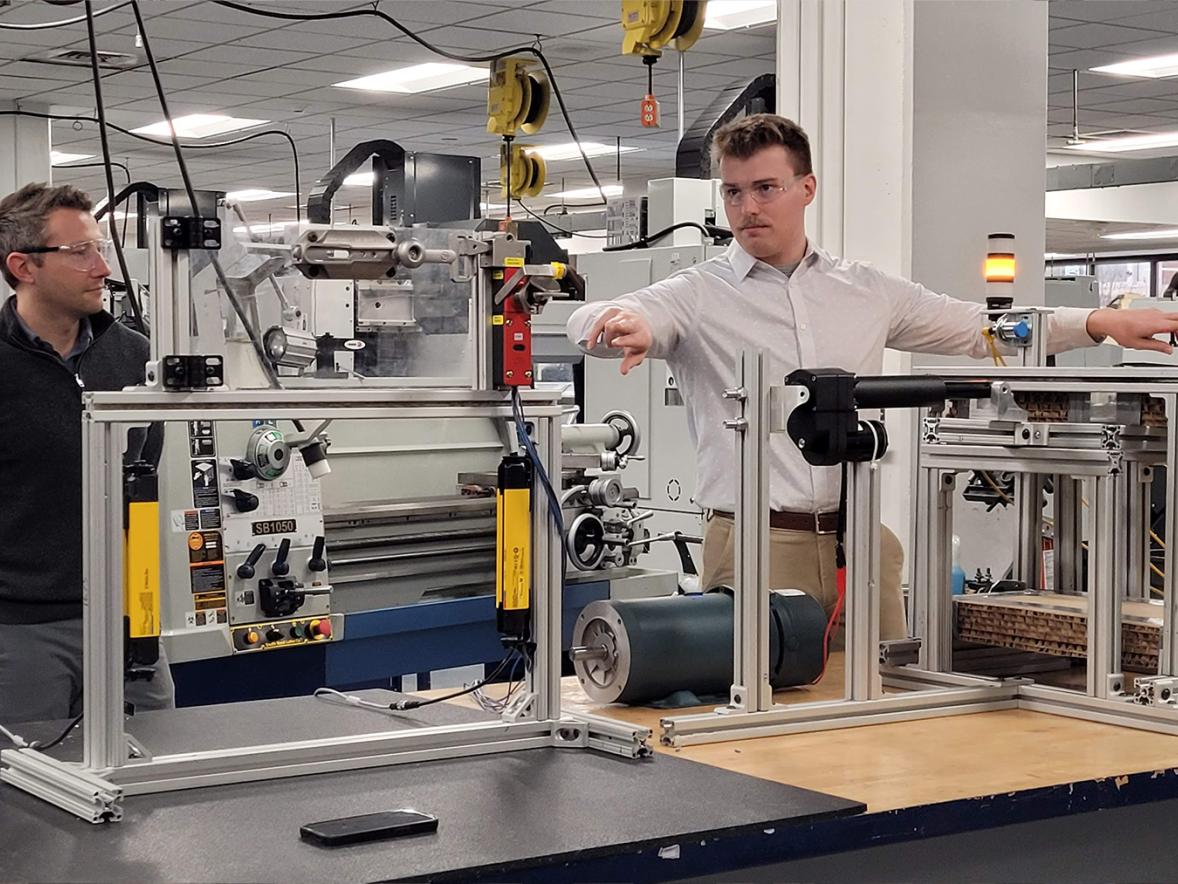Cross-disciplinary students in the Impacts of Engineering course at UW-Stout this spring investigated ways to improve the quality of life for people in the remote forests of eastern Cambodia.
Through the Engineers Without Borders' Design for People Challenge, they worked in teams to engineer solutions for the Bunong people in the rural village of Pu Ngaol.
Twenty teams of 86 engineering and several other majors, as well as area high school students, presented their ideas and prototypes at UW-Stout’s Research Day on May 6. The day highlighted the works of nearly 300 faculty, undergraduate and graduate students, who shared their research through posters and prototypes, exhibits, art and design displays, and oral and panel presentations.
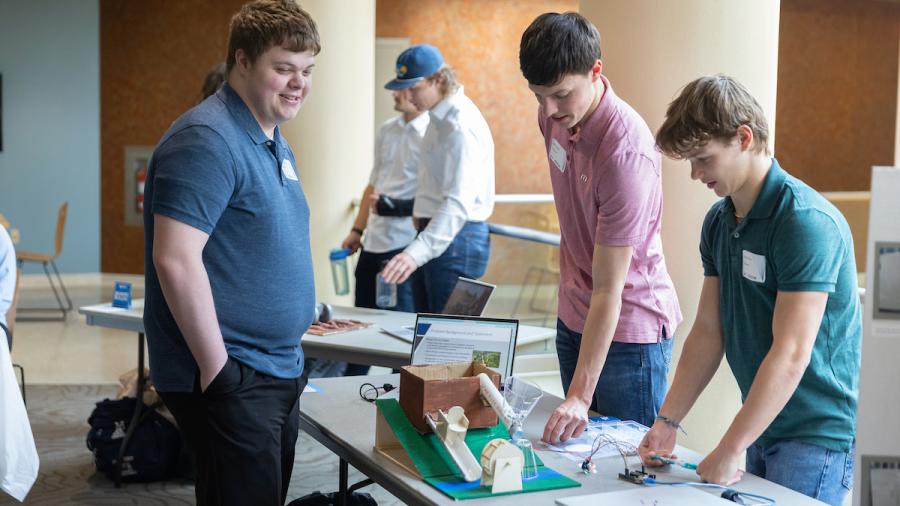
After researching the Bunong people, their culture and low financial means, and taking into consideration the landscape and weather, as well as machinery and materials available in the region, the teams built prototypes and presented ways to create accessible roadways and transportation solutions; renewable energy sources, such as wind and solar polar; reliable food supplies and filtration design for clean drinking water; efficient built environments, including ventilation; safe waste management; and ways to advance information technology.
UW-Stout’s Robert F. Cervenka School of Engineering is dedicated to enhancing the learning and industry-aligned experiences of its more than 1,000 students to help produce the next generation of engineers. It offers five undergraduate programs – computer and electrical engineering, engineering technology, manufacturing engineering, mechanical engineering and plastics engineering; and a master's in manufacturing engineering, available on campus and online.
“The Impacts of Engineering course introduces students to the engineering design process from initiation to completion, while broadening their awareness of the social, environmental and economic implications of engineering, both past and present,” said Senior Lecturer Brenda Puck.
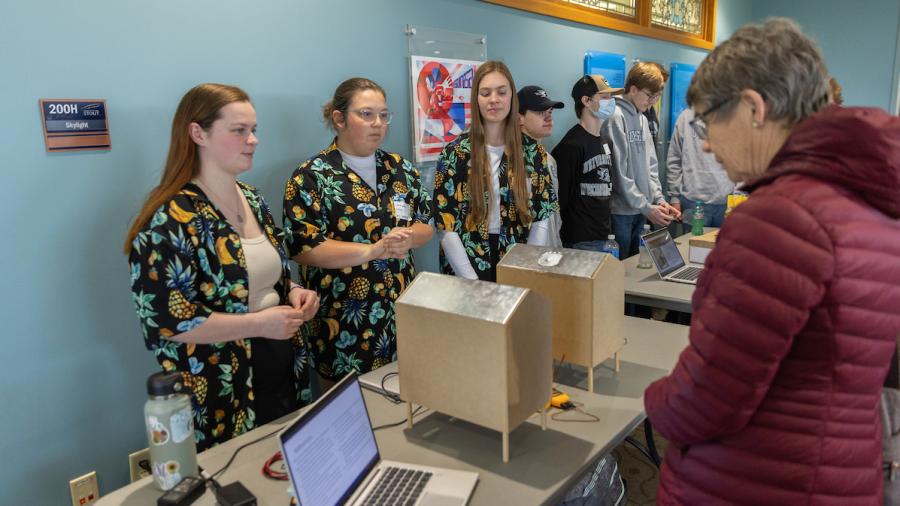
The course is part of Stout Core, foundational general education classes where students gain global perspective and ethical reasoning to understand social responsibility, so they graduate ready to do more on day one.
Two teams present at U.S. Grand Finals
The international Design for People Challenge brings together more than 12,000 engineering students from 46 universities in the U.S., the United Kingdom and Ireland. This year’s challenge was organized by Engineers Without Borders Australia, which has worked with communities in Cambodia since 2005. Designs considered sustainability, community livelihoods, and natural and cultural preservation.
Two UW-Stout teams, with students from six majors, presented their research and designs virtually to an expert panel of judges in the final round of the U.S. Grand Finals, May 30 to June 1:
- Power to the Poor: Trevor Kappel, computer and electrical engineering, Spring Grove, Ill.; Brett Palubicki, construction management, Crandon; and William Gruber and Lucas Traun, recent Durand High School graduates.
- Design Solution for Transportation: Kaleb Kazmarek, supply chain management, Menomonie; Carly Kauffman, graphic design and interactive media, Hanover, Minn.; Rose Wille, supply chain management and business administration, Cannon Falls, Minn.; and Frankie Genereaux, mechanical engineering, Hudson.
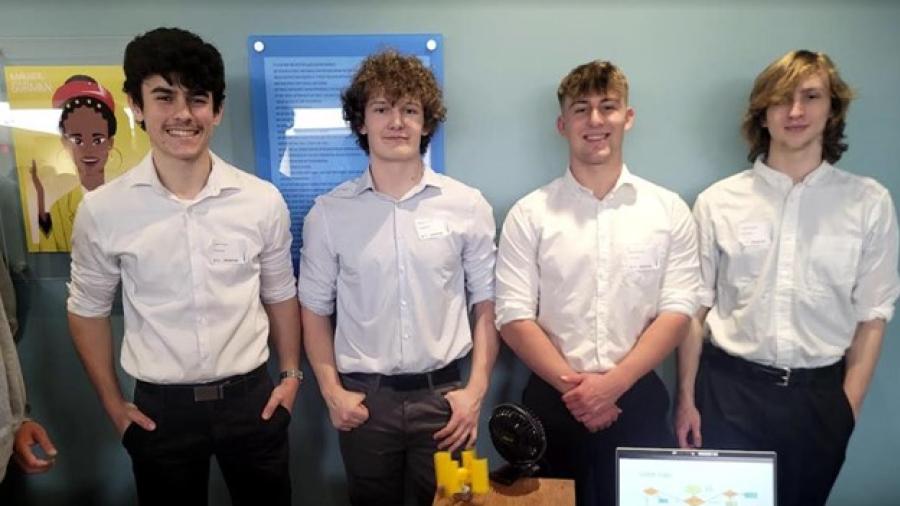
“We chose to use the design challenge as part of the course because it provides a robust exposure to the key components of our polytechnic mission and the Stout Core, no matter what degree a student is enrolled in at UW-Stout,” Puck said.
Projects may be picked up by a company, nongovernmental or other organization and become a real solution for people.
Harnessing wind to bring power to rural areas
With a major goal of the Cambodian government to increase renewable energy production, Kappel, Palubicki, Gruber and Traun aimed to harness wind energy to address the challenge of finding a reliable source of power to cook in rural communities.
In Pu Ngaol, only half the community has access to mainstream electricity because of high connection costs. Further research from the Global Wind Atlas provided the team with average wind speeds in Cambodia, which led them to choose wind turbines as a source of power.
“The biggest inspiration came from seeing the potential of renewable energy to transform communities. The idea that a small wind turbine could provide sustainable power to areas without reliable electricity was incredibly motivating,” Traun said. “I enjoyed the hands-on experience of building and testing our model. Applying theoretical knowledge to a real-world problem and seeing tangible results was incredibly fulfilling.”
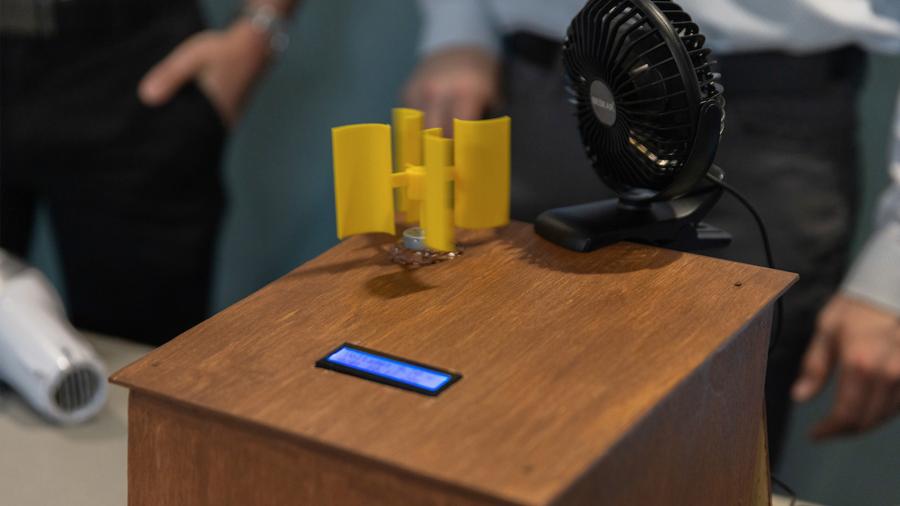
The team researched how different turbine blades and mounting placements would function. Their concepts included vertical blades mounted on a pole, like a windmill; horizontal blades mounted on a roof; and vertical blades mounted on a roof. They proceeded with the third concept for their prototype, based on energy produced and stored, energy output, wind efficiency, durability, safety, cost and usability.
Their model involves three main components: a turbine, car battery and stove. Wind drives the rotation of turbine blades. This mechanical energy is converted into electrical energy by a generator within the turbine, which is then directed to charge a car battery. The battery stores energy for later use to power a stove for up to two hours a day. Considering the monsoon season, the team opted to encase the generator in stainless steel housing to ensure a longer lifespan.
“As we advance our wind turbine prototype, our main goals are to refine its design, improve efficiency and lower production costs without compromising quality or functionality for wider accessibility,” the team said in their Grand Finals presentation.
“I’d like to thank our professors and mentors for their guidance and support throughout this project. Their expertise was invaluable, and we couldn't have achieved what we did without them,” Traun added. “Research Day and the Grand Finals was a great opportunity to get feedback and network with other students and professionals in the field. The experience helped us improve our project and gave us confidence in our engineering skills.”
A transportation solution for safer, more accessible roads
Kazmarek, Kauffman, Wille and Genereaux’s transportation solution was to create a rake and roller attachment compatible with the motorized rice plows used in Pu Ngaol.
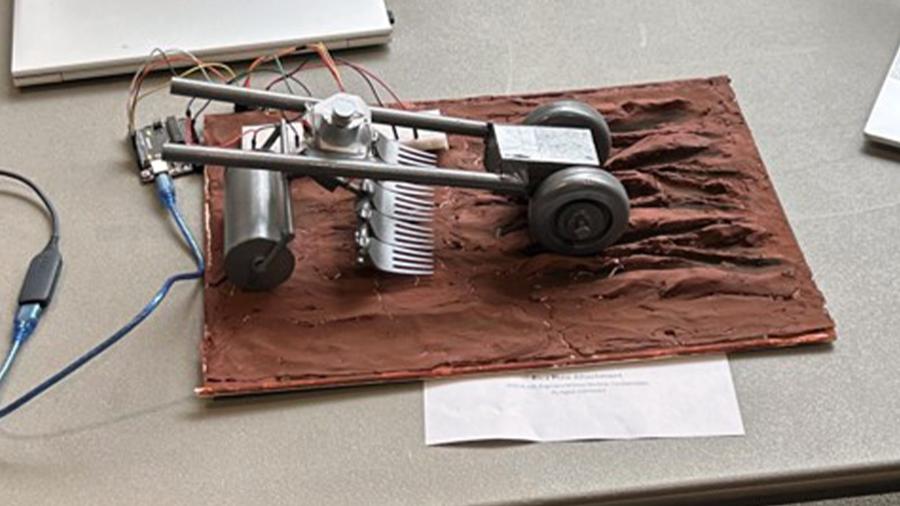
The machine would allow community members easier travel and transport, improve existing road conditions by effectively rototilling and flattening the road surface to ensure a safer path, and could be used even during the monsoon season.
Roads in Pu Ngaol are mainly dirt tracks, which become damaged and inaccessible in the monsoon season, limiting people’s access to necessities, such as work, school or health care.
“It is important that we help solve their road problems as it makes it easier for people to travel and commute safely. We are motivated to helping the community of Pu Ngaol because we feel that we are fortunate enough to have roads that are easily transportable on,” they said in their presentation.
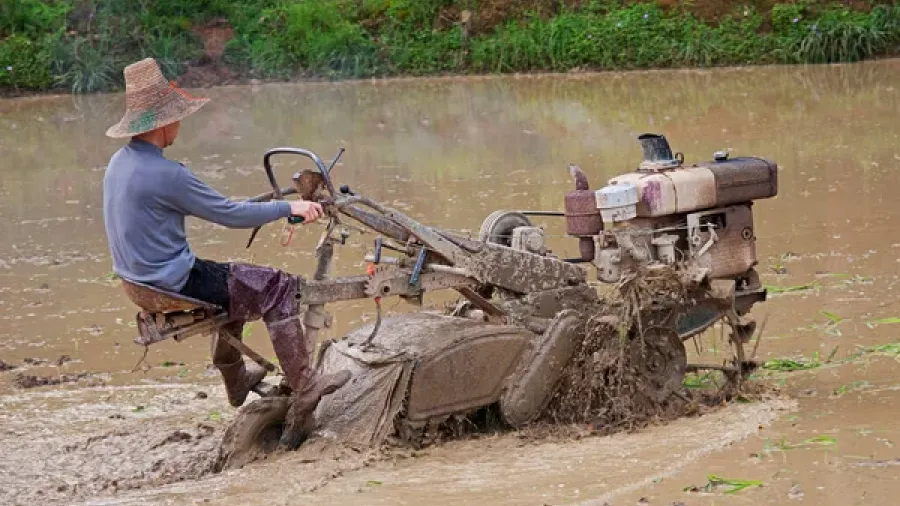
The team researched different machines used in Pu Ngaol, such as rice plows, four-wheelers, cars, gravel dispensers and soil compactors. They determined that rice plows offered the best solution, based on compatibility, material cost and accessibility, system attachments and weight.
“This project is a testament to the power of addressing real world challenges, promising to improve the daily life of those in Pu Ngaol,” they said.
Members of the university’s Engineers Without Borders chapter traveled to the village of Naranjal, Ecuador in summer 2023 to help the 100 residents install a clean water system. They plan to begin the second phase of the two-mile-long mountainside project this summer.





